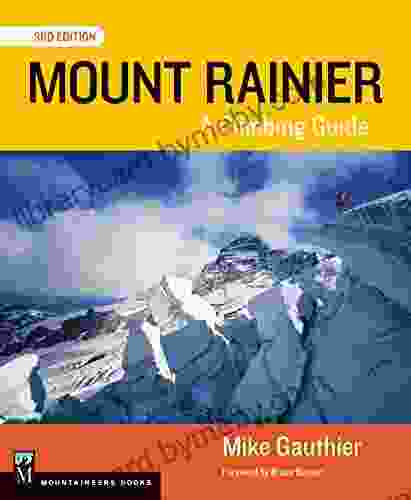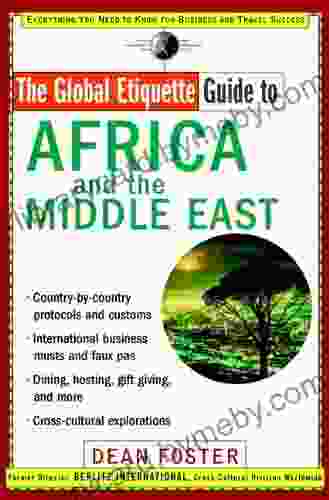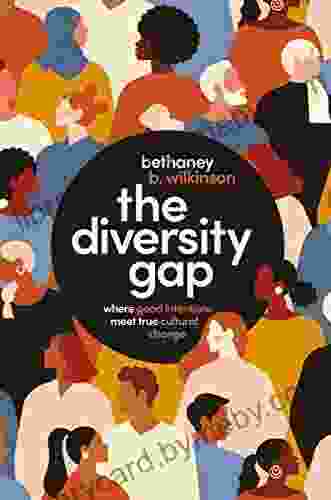Where Good Intentions Meet True Cultural Change: A Path to Organizational Transformation

In today's rapidly evolving social and business landscape, organizations are grappling with the imperative to create inclusive, equitable, and sustainable workplaces. While good intentions often drive these efforts, many well-meaning initiatives fall short of their intended impact. The failure to translate good intentions into true cultural change stems from a lack of understanding of the complexities of organizational culture and the systematic, collaborative approach necessary to transform it.
4.6 out of 5
| Language | : | English |
| File size | : | 2648 KB |
| Text-to-Speech | : | Enabled |
| Enhanced typesetting | : | Enabled |
| Print length | : | 268 pages |
| Screen Reader | : | Supported |
The Journey from Good Intentions to True Cultural Change
True cultural change is a profound and ongoing journey that requires unwavering commitment from leadership, collaboration across all levels of the organization, and a willingness to challenge and reshape existing norms. It is not a quick fix or a superficial makeover; rather, it involves a deep examination of the organization's values, beliefs, and behaviors, followed by the implementation of systemic changes to align these elements with the desired outcomes.
1. Defining Desired Cultural Outcomes
The first step in the journey toward true cultural change is to define the desired outcomes. What are the specific values, behaviors, and practices that will drive the organization toward its goals? This requires a clear understanding of the organization's mission, vision, and strategic objectives, as well as the cultural attributes necessary to achieve them.
2. Assessing Current Culture
Once the desired cultural outcomes have been established, it is essential to assess the organization's current culture. This involves conducting a thorough analysis of existing values, beliefs, behaviors, and practices to identify areas of alignment and misalignment with the desired outcomes. This assessment should involve feedback from all levels of the organization, ensuring a comprehensive and representative understanding.
3. Developing a Transformation Plan
Based on the assessment of the current culture, a comprehensive transformation plan should be developed. This plan should outline the specific strategies, initiatives, and interventions that will be implemented to bridge the gap between the current and desired culture. The plan should be tailored to the specific needs of the organization and its unique circumstances.
4. Implementing the Transformation Plan
The implementation of the transformation plan requires a concerted effort from all members of the organization. It is not the responsibility of a single department or team but a collective undertaking that demands commitment and collaboration. Leadership must play a pivotal role in communicating the importance of the change, providing support, and holding individuals accountable for their contributions.
5. Monitoring, Evaluating, and Adjusting
True cultural change is an iterative process that requires ongoing monitoring, evaluation, and adjustment. Progress should be tracked regularly to ensure that the desired outcomes are being achieved. Based on the evaluation results, the transformation plan should be refined and updated to maintain momentum and address any challenges that may arise along the way.
Benefits of True Cultural Change
Organizations that successfully navigate the journey from good intentions to true cultural change reap significant benefits that impact both their internal operations and external reputation. These benefits include:
1. Enhanced Employee Engagement and Retention
A positive and inclusive culture fosters employee engagement, increases job satisfaction, and enhances retention rates. Employees who feel valued, respected, and empowered are more likely to be committed to the organization and perform at their peak.
2. Increased Innovation and Creativity
Diverse and inclusive cultures stimulate innovation and creativity by bringing together a wide range of perspectives, experiences, and ideas. Organizations that embrace true cultural change provide a fertile environment for employees to share their unique contributions, leading to groundbreaking solutions and enhanced competitive advantage.
3. Improved Customer Experience and Financial Performance
A culture of empathy and customer-centricity leads to exceptional customer experiences, increased loyalty, and improved financial performance. Organizations that prioritize diversity, equity, and inclusion are better equipped to understand and meet the needs of their diverse customer base, driving growth and profitability.
4. Enhanced Reputation and Brand Value
Organizations with strong cultural values and a reputation for diversity and inclusion attract top talent, foster positive media coverage, and build strong relationships with customers and stakeholders. This enhanced reputation translates into increased brand value and competitive advantage.
5. Positive Social Impact
Organizations that drive true cultural change not only benefit themselves but also contribute to a more just and equitable society. By promoting inclusion, diversity, and social responsibility, they create a ripple effect that transforms the communities in which they operate.
Case Studies of Successful Cultural Transformations
Numerous organizations have successfully navigated the journey from good intentions to true cultural change, demonstrating the transformative power of this approach. Here are a few notable case studies:
1. Patagonia
Patagonia, the outdoor apparel company, has long been recognized for its commitment to environmental sustainability and social responsibility. The company's culture is characterized by a deep respect for the environment, a focus on quality over quantity, and a commitment to ethical practices. This culture has fostered employee loyalty, exceptional customer experiences, and a strong brand reputation.
2. Unilever
Unilever, the multinational consumer goods company, embarked on a comprehensive cultural transformation journey in 2010. The company's goal was to create a more inclusive, equitable, and sustainable organization. Through a series of initiatives focused on diversity and inclusion, employee well-being, and environmental responsibility, Unilever has achieved significant progress in transforming its culture, leading to improved employee engagement, innovation, and financial performance.
3. Google
Google, the technology giant, is known for its innovative and creative culture. The company has placed a strong emphasis on diversity and inclusion, creating employee resource groups, providing training on unconscious bias, and implementing policies to promote workplace equality. This culture has fostered a sense of belonging among employees, stimulated innovation, and attracted top talent.
Transforming organizational culture from good intentions to true change is a complex but essential undertaking. By embracing a systematic, collaborative approach that involves defining desired outcomes, assessing current culture, developing a transformation plan, and monitoring progress, organizations can create inclusive, equitable, and sustainable workplaces that drive success and make a positive impact on society.
True cultural change is a journey, not a destination. It is an ongoing commitment that requires unwavering leadership, collaboration, and a willingness to challenge and reshape existing norms. By embracing this transformative path, organizations can unlock their full potential, achieve lasting success, and contribute to a better world.
4.6 out of 5
| Language | : | English |
| File size | : | 2648 KB |
| Text-to-Speech | : | Enabled |
| Enhanced typesetting | : | Enabled |
| Print length | : | 268 pages |
| Screen Reader | : | Supported |
Do you want to contribute by writing guest posts on this blog?
Please contact us and send us a resume of previous articles that you have written.
 Book
Book Novel
Novel Page
Page Chapter
Chapter Text
Text Story
Story Genre
Genre Reader
Reader Library
Library Paperback
Paperback E-book
E-book Magazine
Magazine Newspaper
Newspaper Paragraph
Paragraph Sentence
Sentence Bookmark
Bookmark Shelf
Shelf Glossary
Glossary Bibliography
Bibliography Foreword
Foreword Preface
Preface Synopsis
Synopsis Annotation
Annotation Footnote
Footnote Manuscript
Manuscript Scroll
Scroll Codex
Codex Tome
Tome Bestseller
Bestseller Classics
Classics Library card
Library card Narrative
Narrative Biography
Biography Autobiography
Autobiography Memoir
Memoir Reference
Reference Encyclopedia
Encyclopedia Ledys Angola
Ledys Angola Beth Hoffman
Beth Hoffman Bernardo Kastrup
Bernardo Kastrup Blake J Harris
Blake J Harris Joanna Eleftheriou
Joanna Eleftheriou Beth Hammond
Beth Hammond Bella Lamour
Bella Lamour Beronda L Montgomery
Beronda L Montgomery Beth Leeds
Beth Leeds Blake Pierce
Blake Pierce D J Machale
D J Machale Bina Ramamurthy
Bina Ramamurthy Julian May
Julian May Bet Borgeson
Bet Borgeson Ben Magid
Ben Magid Bob Baker
Bob Baker Bill Plotkin
Bill Plotkin Simon Parry
Simon Parry Carolines Angels
Carolines Angels Brandi Carlile
Brandi Carlile
Light bulbAdvertise smarter! Our strategic ad space ensures maximum exposure. Reserve your spot today!

 Carlos FuentesUnveiling the Majestic Mount Rainier: A Comprehensive Guide for Adventurous...
Carlos FuentesUnveiling the Majestic Mount Rainier: A Comprehensive Guide for Adventurous...
 Brayden ReedMaster Your Martial Arts Technique: An Illustrated Guide to the Muscles Used...
Brayden ReedMaster Your Martial Arts Technique: An Illustrated Guide to the Muscles Used... Julian PowellFollow ·9.4k
Julian PowellFollow ·9.4k Josh CarterFollow ·18k
Josh CarterFollow ·18k Ted SimmonsFollow ·4.9k
Ted SimmonsFollow ·4.9k Jackson HayesFollow ·5.8k
Jackson HayesFollow ·5.8k Preston SimmonsFollow ·6.6k
Preston SimmonsFollow ·6.6k Graham BlairFollow ·16.3k
Graham BlairFollow ·16.3k Morris CarterFollow ·8.2k
Morris CarterFollow ·8.2k Hector BlairFollow ·13.7k
Hector BlairFollow ·13.7k

 Ivan Cox
Ivan CoxSpeak With Ease: The Ultimate Guide to Public Speaking...
By Rupika Raj ...

 Jesus Mitchell
Jesus MitchellVulcan Forge: A Suspense Thriller that Will Keep You on...
Vulcan Forge is...

 Dashawn Hayes
Dashawn HayesThe Carteret Family Bob Martin: A Comprehensive Review
Bob Martin's...

 Owen Simmons
Owen SimmonsUnlock the World of Cultural Nuances with "The Global...
Embark on a Journey of...

 Ian McEwan
Ian McEwanConquer the Mountain: True Account of Catastrophe and...
In the heart of California's stunning...
4.6 out of 5
| Language | : | English |
| File size | : | 2648 KB |
| Text-to-Speech | : | Enabled |
| Enhanced typesetting | : | Enabled |
| Print length | : | 268 pages |
| Screen Reader | : | Supported |










